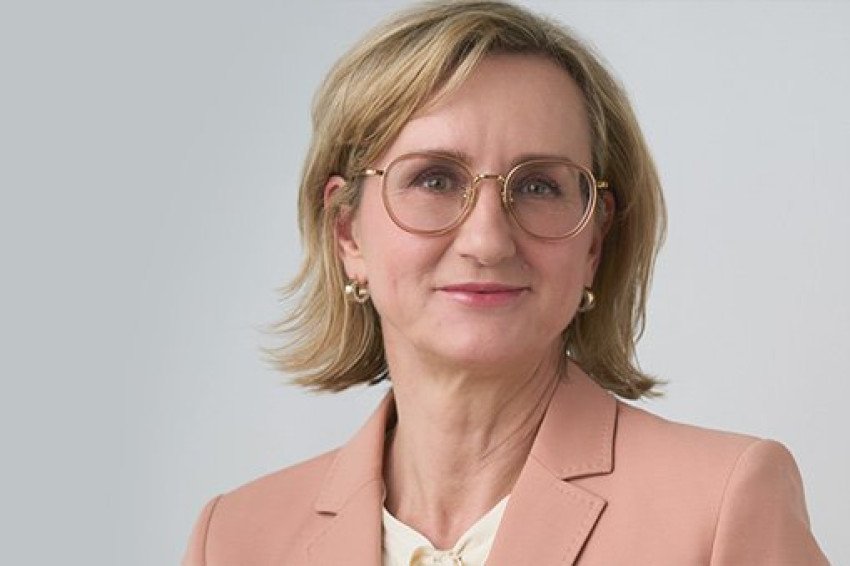Discover our nationwide festival for tech that's good for the world.
ASX Dual Listing Helps Position TruScreen for Long-term Growth
By Consulting Editor for ASX Tony Featherstone
20 April 2023

Move turns spotlight on medtech’s cervical-cancer screening device.
In 2021, the National AIDS Council in Zimbabwe launched a pilot program to test the effectiveness of TruScreen Group's (ASX: TRU) mobile cervical-cancer screening device. The program has since tested more than 10,000 women, largely in remote villages.
“We’ve been able to help Zimbabwean women who have never had access to cervical-cancer screening before,” says TruScreen CEO Dr Beata Edling. “Through earlier detection of cervical cancer, we can help more women in low- and middle-income countries.”
TruScreen, dual listed on ASX and NZX, is addressing a huge problem. Cervical cancer is the leading cause of cancer-related deaths in Eastern Africa. Women with HIV are six times more likely to develop cervical cancer. Having HIV nearly doubles the risk of dying from the cancer.
Zimbabwe has the fifth-highest rate of cervical cancer and most patients there are diagnosed at the late or end stage of the disease. The country’s health system cannot screen enough women and traditional screening techniques have not significantly lowered cervical-cancer mortality rates.
Developed over more than two decades, TruScreen’s cervical-cancer screening device is an alternative to traditional screening methods. The device is mobile, provides real-time results and does not require laboratories.
In remote Zimbabwean villages throughout Masvingo province, female healthcare workers assist women to take the test. A pen-like digital wand is gently placed on the surface of the patient’s cervix. After three minutes, the patient and practitioner receive the results. If the test shows an abnormality, the patient can get immediate advice on the next steps.
“If we want to eradicate cervical cancer in developing countries, we must encourage much higher rates of screening,” says Dr Edling. “In TruScreen’s experience, countries with high rates of HIV are very proactive in developing cervical-cancer strategies. They recognise the benefits of our technology and are showing interest in using it.”
Zimbabwe is one of 23 countries TruScreen is targeting. The company’s technology has been tested in hospitals in Vietnam and China. Strong results from its China study were published and presented at a 2021 conference. About 15,000 Chinese women have had the test. TruScreen is also focused on Saudi Arabia, Mexico and Russia.
From humble beginnings in the 1980s, TruScreen has so far screened hundreds of thousands of women worldwide for pre-cancerous and cancerous tissue in their cervix in clinical trials alone – and helped save lives through early detection.
Challenging market response
But for all its operational progress, TruScreen has had to work hard to attract investors. Capitalised at $14 million [1] on ASX, TruScreen is easy to overlook. Like many micro-cap medical-device companies, the stock is not widely followed by brokers or the media.
TruScreen listed on NZX in late 2014 with an implied market capitalisation of NZ$14.4 million. After strong early gains, the share price drifted lower, particularly during the COVID-19 pandemic when it was harder for small biotechs to raise capital.
In January 2021, TruScreen dual listed on ASX, following the path of other NZ-based medical-device companies that have chosen to join this market. They include Aroa Biosurgery (ASX: ARX), Pacific Edge (ASX: PEB) and Volpara Health Technologies (ASX: VHT), which is featured separately in this edition of Listed@ASX.
TruScreen raised about $1.9 million through an Initial Public Offering (IPO) on ASX in June 2021, capitalising it at $25.2 million at listing.
Edling says the ASX dual listing helps TruScreen reach a broader investor base and access a larger pool of medtech capital compared to NZ. The main goal is increasing TruScreen’s share liquidity and raising its market and industry profile.
“TruScreen was encouraged by its NZ-based shareholders to dual list on ASX and reach a wide range of individual investors,” says Edling. “The IPO was a seamless process that was completed within two months. We took the opportunity to raise new funds.”
Edling says it made sense for TruScreen to be dual listed on ASX given its Australian operations. TruScreen chairman Tony Ho, Edling and other senior management are based in Sydney. The company’s technology was originally developed by medical academics from Sydney University with additional development by NZ scientists and CSIRO.
“Being based in Australia enables easier face-to-face visits with broking analysts,” says Edling. “There are more medtech companies on ASX and several are working on cancer treatments. That makes it easier for analysts to form peer comparisons with TruScreen.”
Edling says the ASX listing has increased TruScreen’s international visibility. “This is very important in the biotech sector. As TruScreen grows, we will need to access a wider range of collaborations with global pharmaceutical and medtech companies that focus on ASX-listed entities. TruScreen’s liquidity needs will also change. Being dual listed on a global bourse, such as ASX, provides greater access to international investors.”
Edling says TruScreen has attracted more coverage since its ASX listing. “It’s early days, but we’ve had reasonable newswire coverage of TruScreen in Australia and excellent social-media coverage. We’re getting the message out to more women in low- and middle-income countries about the importance of cervical-cancer screening.”
Mission-driven growth
Edling is passionate about TruScreen’s purpose. Polish born, she migrated to Australia in 1992 and worked mostly in Sydney as a general practitioner and a surgical trainee. After 14 years in our healthcare system, she completed a PhD in reconstructive surgery and stem cells at the University of New South Wales.
From there, Edling moved into the medtech industry, having had several management and board roles before being appointed TruScreen CEO in October 2022. Edling worked at TruScreen in a technical role for two years before becoming its CEO.
Later this year, Edling plans to visit TruScreen’s key international markets to meet with governments and health authorities. From China to the Middle East, Africa and Eastern Europe, cervical cancer remains a key cause of death in women where there are higher rates of HIV and AIDs.
In developed countries, the number of cervical-cancer fatalities has fallen because of HPV vaccines, screening and detection. But it’s a different story in low- and middle-income countries. Also, the experience of Western countries shows it takes more than a decade to lower cervical-cancer fatalities through vaccines.
TruScreen has much work ahead as it collaborates with overseas health authorities to test the effectiveness of its technology against traditional screening methods. The company believes its second-generation TruScreen Ultra2 device is the world leader in opto-electrical examination of cervical tissue. And that the device will, over time, become the screening tool of choice in more countries.
For now, TruScreen must convince investors of its growth potential. A dual listing on ASX provides a larger platform for TruScreen to tell that story to Australian and international investors, attract new capital and raise its profile.
Edling is not deterred by the challenge. “COVID-19 was very difficult for the medtech sector but TruScreen came out of it in good shape, thanks to previous management. The dual listing on ASX is designed to show more investors that the company is growing internationally while retaining its agility and strong sense of purpose.”
Edling describes TruScreen as a “FemTech” company with a strong vision for women’s health and a world without cervical cancer. “I feel privileged to head an organisation with such an amazing heritage and purpose,” she says. “Through TruScreen, I can contribute to and engage in a global and generational conversation on the economic and social impact of women.”
[1] At 12 January 2022. Capitalisation refers to ASX-listed shares. Capitalisation was $14.15 million.
Subscribe to the Techweek newsletter for updates straight to your inbox:
Recent news
Selling business solutions to Malaysia's ICT sector
29 Apr 2024
This article was originally posted by myNZTE.
What do tech buyers in Singapore want?
29 Apr 2024
This article was originally posted by myNZTE. Companies in Singapore don't tend to know much about New Zealand's tech offerings, but they are open to them.


